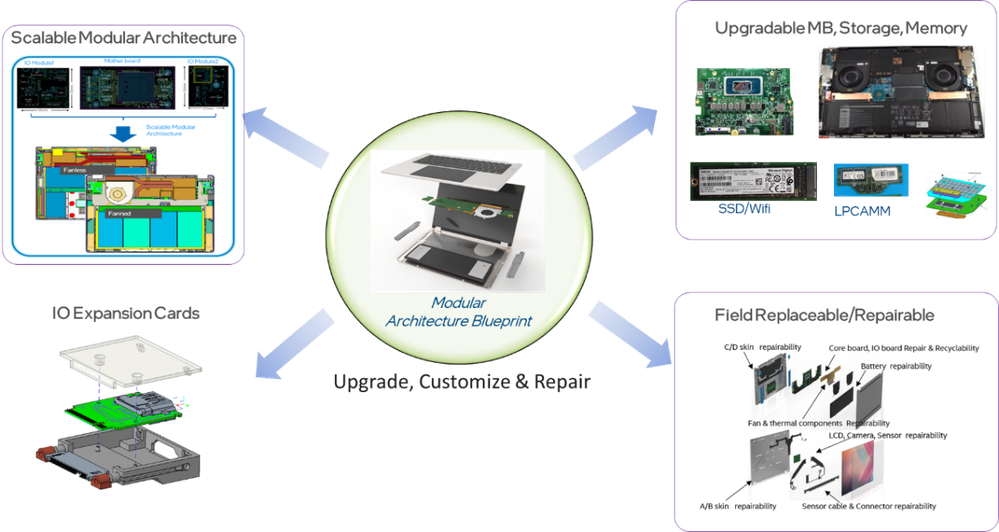'Next generation of laptops': Intel unveils blueprints for a fully repairable and modular computer
Intel’s reference laptop design aims to cut e-waste and make computers you can easily repair.

Reference designs for a new kind of modular computer could be the gateway toward laptops and mini-PCs that are easily repairable and reduce electronic waste (e-waste), Intel engineers hope.
The computing giant has shown off its ambitions to create a new PC architecture for laptops that revolves around a motherboard split into several modules — comprising a core mainboard and separate I/O modules for handling things like connectivity. This differs from the all-in-one design commonly found in most laptops. The engineers published their blueprints on Jan. 22 in a blog post.
Splitting a traditional motherboard into multiple components creates a scalable design that enables the reuse of components in laptops of different sizes and layouts. This modular approach means you can swap out faulty motherboard components rather than needing to replace the entire mainboard. Adopting a standardized modular design also means laptop makers could cut manufacturing costs and reduce waste.
"By developing a new approach to system design that allows for easy upgrades and component replacements, we aim to significantly extend the usable life of computing devices, thereby reducing electronic waste and promoting a more sustainable consumption model," three Intel representatives jointly wrote in the blog post.

Modular moves
The crux of modular laptops is that if a component breaks or needs to be upgraded, it can be easily swapped out by the user or a skilled technician without needing to replace other parts of the machine or be sent back to the factory.
This has been the case with some parts of Panasonic's ToughBook laptops and the Framework Laptop 13, a highly modular laptop with a design that enables multiple components to be swapped in and out, and hardware that’s easily accessed — not glued down, as is the case with other laptop brands.
Sign up for the Live Science daily newsletter now
Get the world’s most fascinating discoveries delivered straight to your inbox.
However, such modularity is far from standardized. Unfortunately, as good as the entries on our list of the best laptops for coding and programming and best laptops for students are, these machines lack many, if any, upgradable components. If they break, they often need specialist repair.
Intel’s "Modular Architecture Blueprint" aims to change this by taking modularity further than Framework’s laptops and delivering a reference design that addresses modularity from the manufacturing stage, to field repairs and user upgrades. Add in easily swappable memory, storage and Wi-Fi components — still not commonly replaceable in mainstream laptops — and Intel could usher in a laptop design that facilitates more customization for hardware makers yet doesn't stymie DIY repairs.
Intel is also looking to achieve the same with mini-PCs, only with hot-swappable M.2 modules that allow for key components like the graphics processing unit and processor to be easily swapped in a "plug and play" approach. While full-size and compact desktop PCs have always been modular, with the ability to swap main components in and out, the compact nature of mini-PCs makes such modularity a harder proposition.
If Intel can ship these reference designs to computer makers, it could usher in more laptops and mini-PCs that can be upgraded and repaired by users, while also reducing the amount of e-waste that is produced.
Roland Moore-Colyer is a freelance writer for Live Science and managing editor at consumer tech publication TechRadar, running the Mobile Computing vertical. At TechRadar, one of the U.K. and U.S.’ largest consumer technology websites, he focuses on smartphones and tablets. But beyond that, he taps into more than a decade of writing experience to bring people stories that cover electric vehicles (EVs), the evolution and practical use of artificial intelligence (AI), mixed reality products and use cases, and the evolution of computing both on a macro level and from a consumer angle.
You must confirm your public display name before commenting
Please logout and then login again, you will then be prompted to enter your display name.











